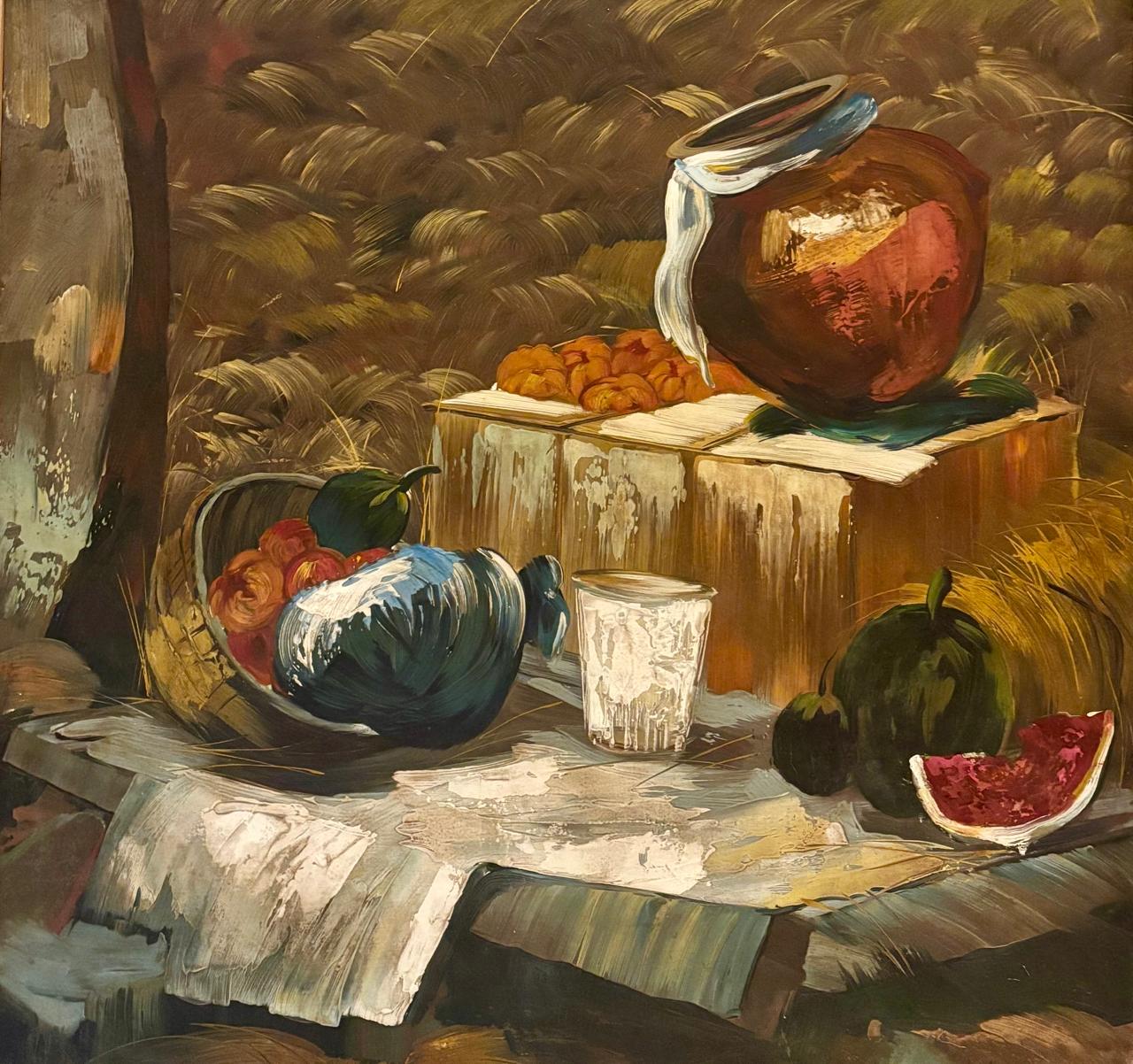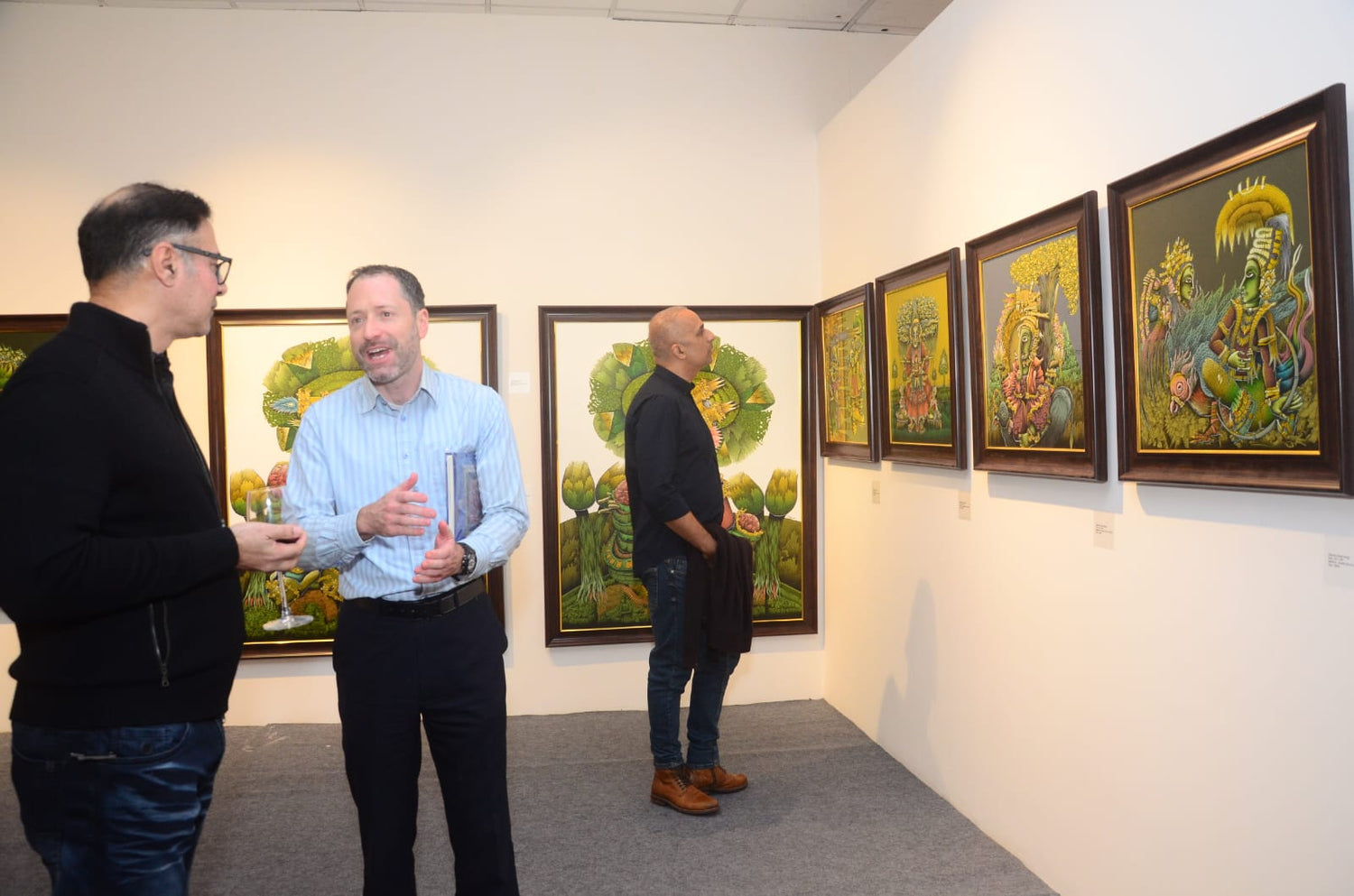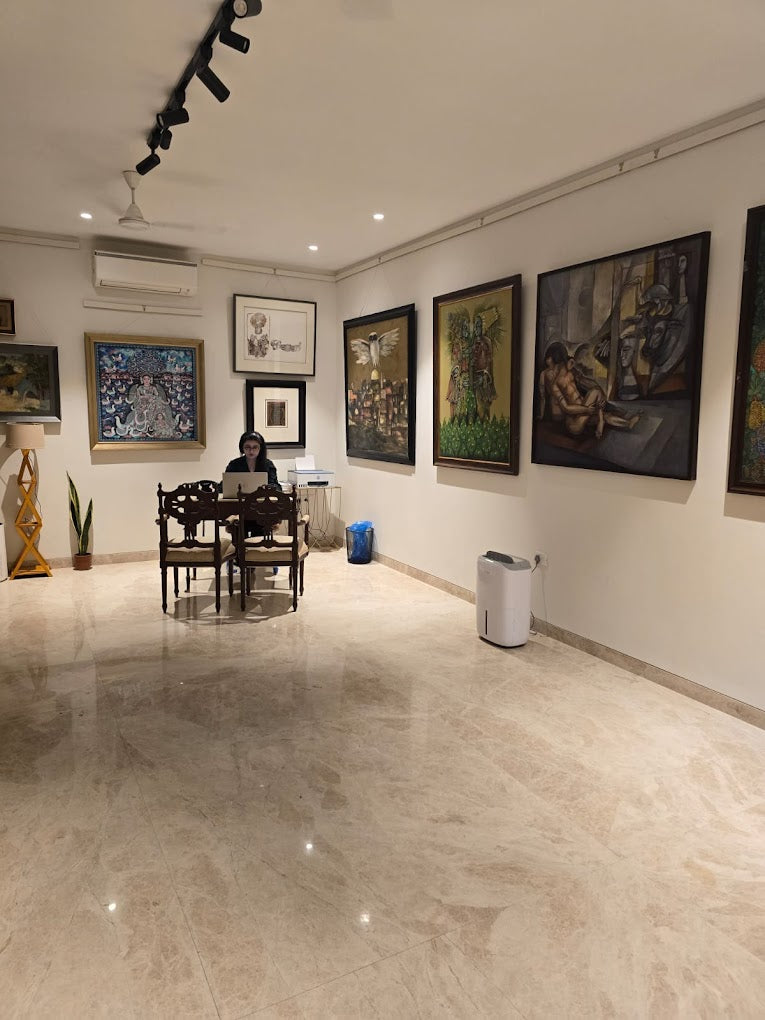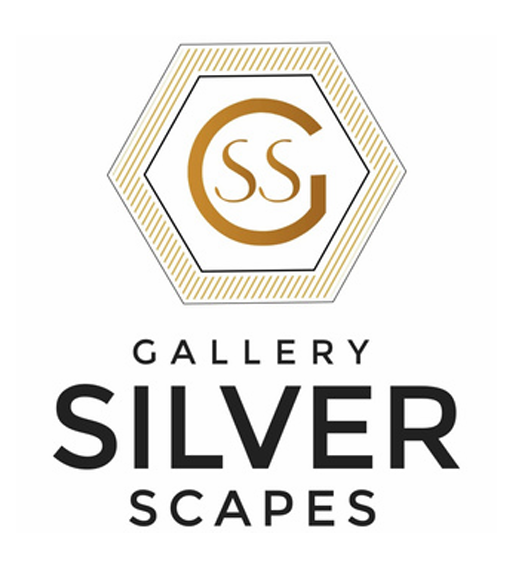Gallery Silver Scpaes
Untitled
Untitled
Couldn't load pickup availability
Artist: Walter Langhammer
Medium: Oil on Canvas
Size: 36 × 36 inches (91.44 × 91.44 cm)
Evocative of a timeless agrarian rhythm, this still life painting captures the quiet abundance of a post-harvest setting. The composition centers around a large, earthenware jar, its weathered surface and wrapped light-hued cloth suggesting utility, tradition, and domestic ritual. Resting atop stacked wooden crates brimming with desiccated, orange-toned fruits, the vessel becomes both anchor and symbol, evoking the rural cycles of preservation and sustenance.
Executed in a rich impasto technique, the artist skillfully manipulates texture and depth, allowing each object to emerge with tactile immediacy. The brushstrokes are deliberate and expressive, imbuing the painting with an energetic materiality that heightens the viewer’s sensory engagement. A warm, earthen palette, anchored by ochres, muted reds, dusty greens, and soft browns, echoes the hues of late summer and early autumn, conjuring a season of ripeness and retreat.
Scattered across the rustic wooden table is a meticulously arranged array of produce: a bowl of peaches and assorted fruits offering chromatic variation and visual rhythm; a dark-purple cabbage or gourd introduces a jewel-like saturation and sculptural form; a dark-green pumpkin provides grounding mass and tonal contrast. The inclusion of a solitary glass, filled with what appears to be cream or milk, injects a subtle human presence—suggestive of nourishment and the daily rituals of farm life. At the lower right, a luscious wedge of red watermelon, its flesh rendered with juicy vibrancy, draws the eye and provides a moment of freshness and immediacy within the otherwise hushed tableau.
In the backdrop, straw-like stalks stretch upward in vertical rhythm, rendered in shifting hues of tan, beige, and soft brown. This field-like element not only situates the scene within a larger agrarian context but also reinforces the sense of seasonal transition. The interplay of vertical and horizontal forms, alongside a careful modulation of color and light, reflects the artist’s command of classical still life tropes while imbuing the composition with a distinct rustic sensitivity. The painting serves as a lyrical meditation on abundance, impermanence, and the tactile pleasures of the natural world. It is a celebration of the ordinary, elevated through masterful technique and a deeply felt connection to rural life and its enduring rhythms.


Why Choose Us
Art has always, naturally, reflected the development and exploration of different thoughts and perceptions, and our current postmodern era is no different. It is interesting to see how art has evolved visually, yet the traditional methods of composing art remain a valid means of expression.
All it takes for an artist to rise above normalcy, is inspiration, which fuels his passion to paint beautiful creations throughout his life.
The valuable expression of art is always there with us, but now this expression is yet to take an interesting diversion with our art gallery, Gallery Silver Scapes, located in Hauz Khas Enclave. Art is no longer considered just decorative but has evolved and come forth as a major form of investment yielding high rates of returns for its buyers, making it an expression commonly used.

Mrs Mayor was walked into the art world by the legendary modernist Bimal Das Gupta, one of whose biggest collections remains with Gallery Silver Scapes. In the 1980s, as head and first curator of the Habiart Gallery founded by Mrs Rekha Modi — a childhood friend — Mrs Mayor worked closely with and curated shows for renowned artists such as A Ramachandran, GR Santosh, Rameshwar Broota, Sakti Burman, MK Bardhan, Dhiraj Chaudhury, M Sivanesan, and Arup Das among others.
Besides modern masters, she also worked with young contemporaries such as Sudip Roy, Paresh Maity, Subroto Kundu, Vinod Sharma, and many more. Artworks commissioned by her are now part of prestigious collections, such as those of the India Habitat Centre, Ranbaxy, Pepsi, Hotel Lalit, Bank of America, and many more private and public collections.

